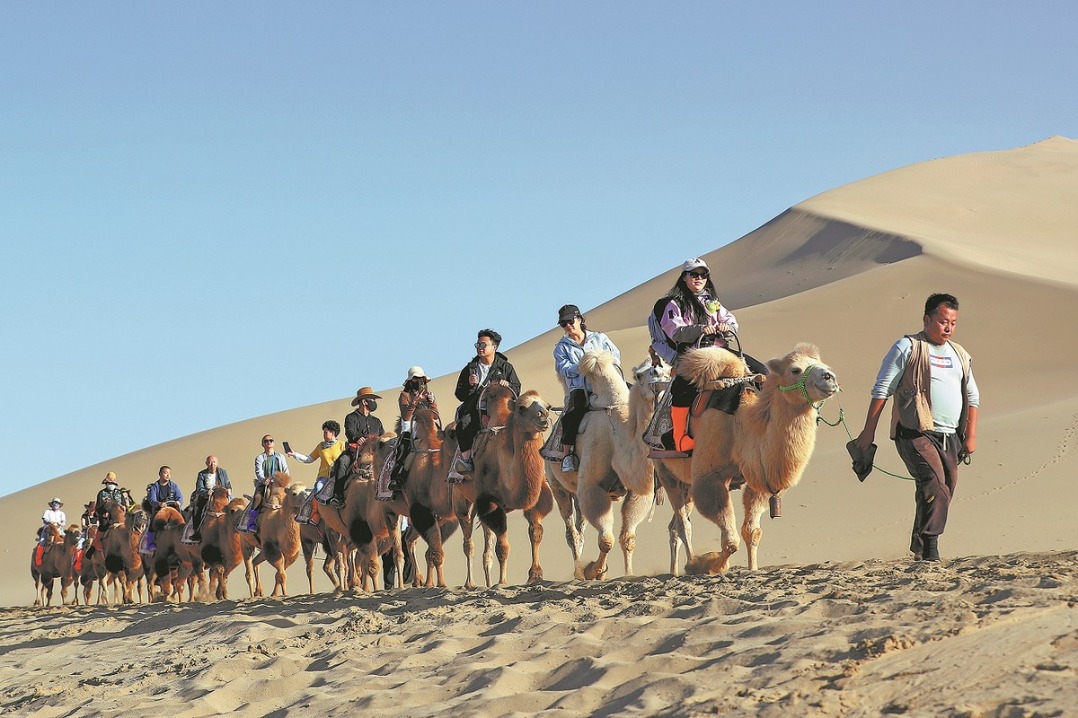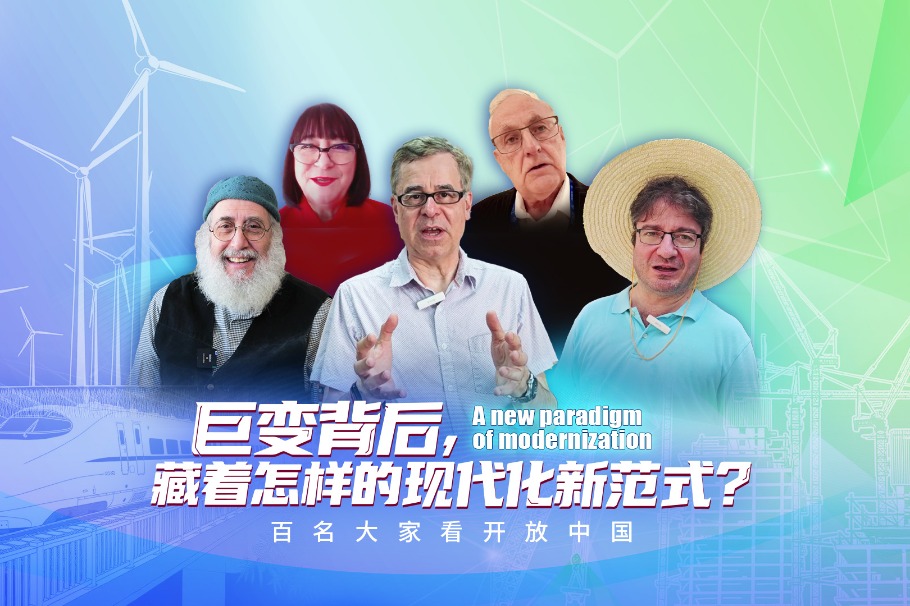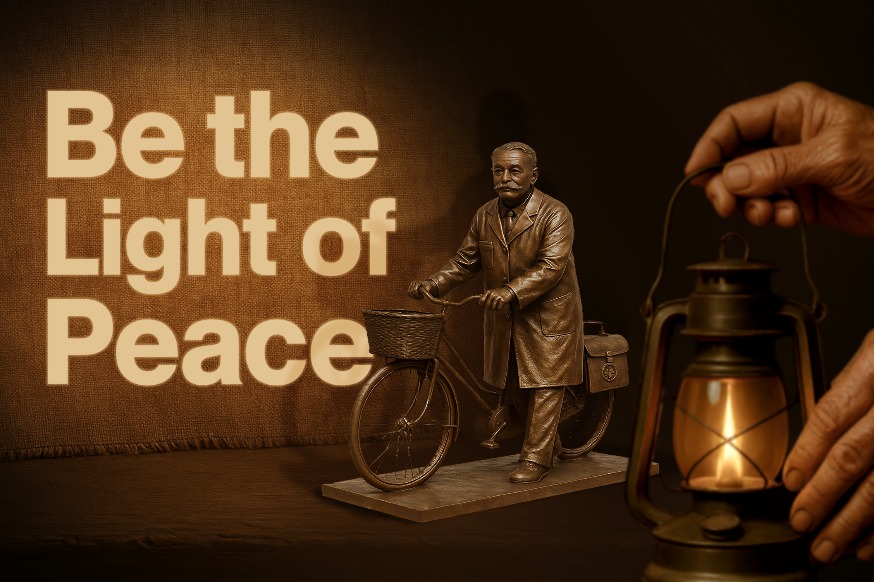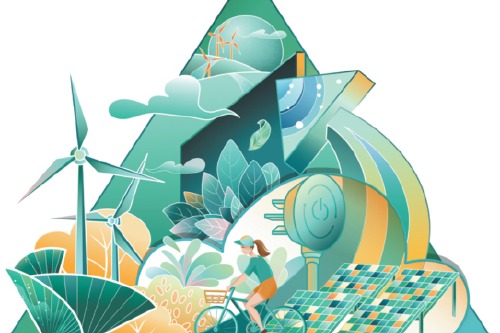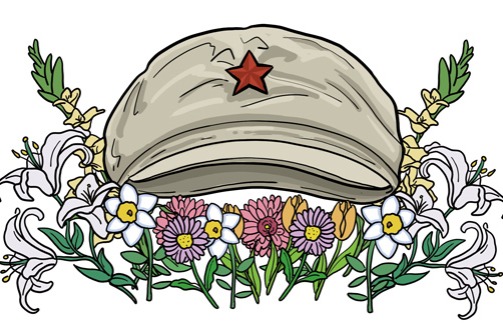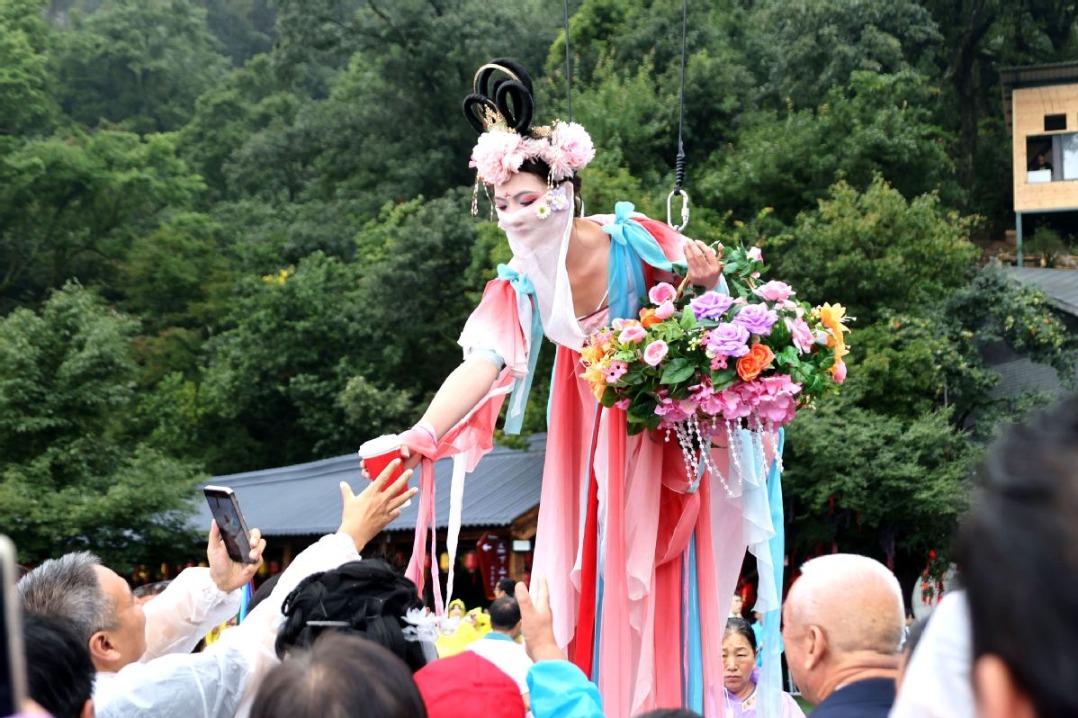Double act potential
The Olympic legacy and red tourism can be synergized into valuable cultural and educational resources


This year marks the 80th anniversary of victory in the World Anti-Fascist War. For China, it is also a moment to renew the momentum of red tourism, which commemorates the nation's transformative modern history and the preservation of the revolutionary spirit. At the same time, sports events, digital technology and international communications are reshaping both the presentation of red culture and how audiences are engaging with it.
The use of Olympic venues after the Summer Games in 2008 and the Winter Games in 2022, both of which were held in Beijing, has long been a matter of international interest. Shougang Park, combining industrial relics from the former giant steel mill with modern Winter Olympic facilities, has steadily evolved into a distinctive destination for urban getaways. It has welcomed more than 31 million visitors since it opened in 2020.
At the heart of the park is Big Air Shougang, the world's first ski jumping platform to be permanently preserved and used. Since its debut, it has drawn millions of visitors. Set against a backdrop steeped in industrial heritage, the site is more than a landmark of the Olympic Spirit. It also carries forward the century-long history of China's industrialization and its ethos of national service, which gives the venue a natural advantage in introducing the elements of red education.
Retelling this history through only text and images may struggle to engage younger audiences. Instead, by making use of Big Air Shougang and its surrounding areas, a dedicated study route could be created to showcase the site's red heritage and enrich the visitor experience.
Looking ahead, the park could weave the abandoned blast furnaces, old factories and new Olympic facilities into a coherent narrative of history, industry and sports. One potential stop is the 50-meter-long blazing red light installation beside Xiuchi Lake, designed to evoke the flow of molten iron and to symbolize the contributions of the iconic No 3 blast furnace to the country's steel industry. Here, visitors can see how the factory supported the nation across different eras, gaining a concrete sense of values such as patriotism, dedication and perseverance.
Digital technologies can turn historical red stories into interactive experiences. For instance, after London's main Olympic venue was transformed into the Queen Elizabeth Olympic Park, augmented reality technology was used to recreate Olympic moments and the city's evolution, allowing visitors to appreciate both the grandeur of the sports event and the social and cultural context behind it.
Similarly, the Big Air Shougang venue could use virtual reality to create scenario-based challenges, such as "wartime industrial transport" or "supply protection", allowing participants to engage in skiing, climbing and orienteering while immersing themselves in these historical contexts. This approach preserves the site's sports-focused character while enhancing both the engagement and memorability of educational tours.
When combined with red-themed narratives, sports events can create unique sports tourism products. Two distinctive examples are the Yan'an Red Half Marathon in Shaanxi province and the Jinggangshan Ultra Trail Race in Jiangxi province, which have successfully drawn large numbers of participants interested in both sports and cultural tourism.
Shougang Park could develop events such as a red industrial spirit marathon or red memory orienteering. Setting red landmarks in and around the park as checkpoints can dynamically integrate sports with storytelling and cultural engagement. According to Beijing Youth Daily, during the World Table Tennis China Smash 2024, the park received 635,000 visits and generated approximately 29 million yuan ($4.04 million) in spending. Similar events could boost regional consumption and be presented to a global audience through international broadcasting.
In the long run, the impact of a single venue is limited, making regional collaboration essential for red education. Shougang Park could partner with the Pingxi Anti-Japanese Aggression War Memorial Hall and the Lugou Bridge Incident site to create a cross-district study tour route featuring both the Winter Olympics and reminders of historic red events. Supported by unified study materials and digital guide systems, visitors could experience the Olympic legacies while also gaining a structured understanding of Beijing's red history in a single journey.
A similar model can be found in Germany's Ruhr region, where former coal mines and steel plants have been transformed into spaces for sports, performances and educational activities. By organizing these sites into themed routes, industrial heritage and cultural learning reinforce each other, creating a sustainable tourism system. This shows that with thoughtful planning, industrial heritage can become a lasting source of attraction in regional cultural tourism.
Furthermore, the sustainable development of red education relies on both skilled talent and cultural creativity. Shougang Park could collaborate with universities and training institutions to establish programs to train guides who are well-versed in red history as well as in sports.
At the same time, by drawing on the park's imagery and historical stories, it could develop creative products with both commemorative and practical value, such as red-themed sports equipment or models of industrial heritage, so that red memories can be carried into everyday life.
In conclusion, the integration of the Olympic legacy and red tourism is not merely placing two themes side by side, but generating added value through presentation complementarity. Embedding red education into Winter Olympic venues helps mitigate the risk of homogenization in the post-Games use of sports heritage. At the same time, the popularity and technological capacity of these venues allow red tourism to engage audiences in ways that are more youthful and international. This model stands as both a tribute to history and a vivid illustration of China's ongoing efforts to integrate culture and sports.
Zhang Youyin is an associate professor at the School of Leisure Sports and Tourism at Beijing Sport University. Jiang Yiyi is the dean of the School of Leisure Sports and Tourism at Beijing Sport University. The authors contributed this article to China Watch, a think tank powered by China Daily.
The views do not necessarily reflect those of China Daily.
Contact the editor at editor@chinawatch.cn.

















